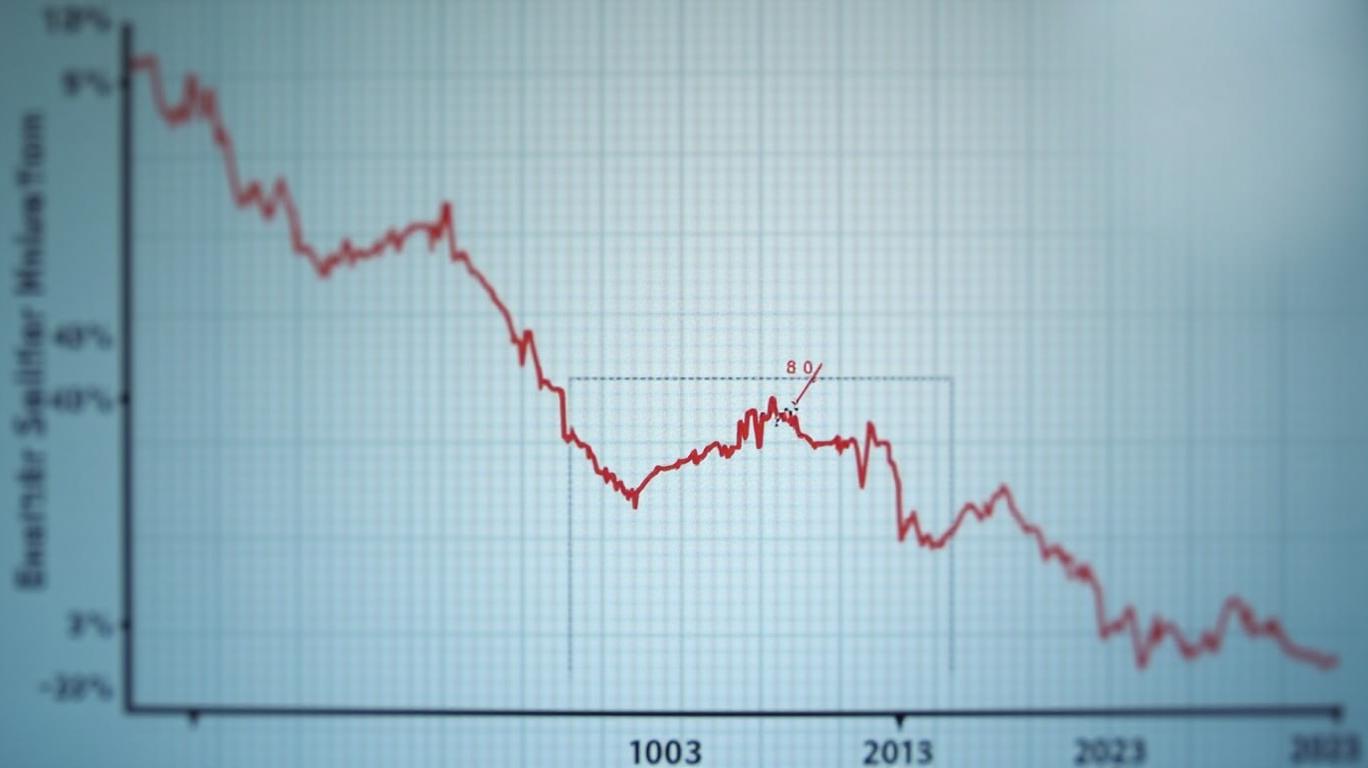CPI Eases to 2.3%: Time to Reallocate to Rate-Sensitive Sectors
The April 2025 Consumer Price Index (CPI) report delivered a critical signal for investors: inflation has cooled to 2.3% annually, undershooting expectations and marking the slowest pace since early 2021. This milestone—driven by easing energy costs, a moderation in shelter inflation, and persistent declines in used vehicle prices—creates a pivotal moment for portfolio reallocation. With the Federal Reserve likely pausing its rate-hike cycle, investors should pivot from defensive strategies to valuation-sensitive sectors poised to thrive in a lower-rate environment. Below, we dissect the data, Fed implications, and actionable opportunities for aggressive capital deployment.
The CPI Breakdown: A Sectoral Shift in Favor of Growth
The April CPI report revealed a clear divergence in inflation drivers, with shelter and energy leading the moderation while used vehicles signaled sustained relief.
- Shelter Costs: The Lingering Dragon, Now Slowing
- Shelter prices rose 0.9% month-over-month in April, the largest single-month increase since August 2023. However, the annual rate dipped to 4.0%, the slowest since November 2021. While rent and owner-occupied costs remain elevated, the moderation reflects cooling demand and expanding housing inventory.
- Key Takeaway: The Fed will focus on the annual trend, not the April blip. This bodes well for a pause in rate hikes.

- Energy: A Deflationary Tailwind
- Energy prices fell 0.8% in April, extending a decline that saw gasoline drop 6.3% in March. Annual energy inflation hit -3.3%, with gasoline prices down 9.8% over 12 months.
Impact: Lower energy costs free up consumer spending power, favoring cyclical sectors like autos and travel.
Used Vehicles: The Deflationary Star
- Used car and truck prices dropped 1.5% in April, marking the fifth consecutive monthly decline. This reflects stabilized supply chains and reduced demand, with light trucks—critical to industrial sectors—falling 1.8%.
- Opportunity: Autos and logistics stocks could rebound as affordability improves.
Fed Policy: The Pause Is Here—Valuation Multiples Will Expand
The 2.3% CPI print removes the Fed’s inflationary excuse for further hikes. With core inflation (excluding food/energy) at 2.8%, the central bank is likely to hold rates steady at its June meeting. This creates a sweet spot for growth assets:
- Tech and Consumer Discretionary: Lower rates directly boost valuations for high-growth companies.
- Real Estate: Reduced mortgage rate pressures could reignite housing demand, benefiting homebuilders and REITs.
- Fixed Income: Bond yields may drift lower, benefiting long-duration assets like utilities and telecoms.
Sector Rotation: Where to Deploy Capital Now
The CPI slowdown opens clear tactical opportunities. Here’s how to reallocate:
1. Tech: Embrace Valuation Expansion
- Why Now? Lower rates reduce discount rates, boosting present-value calculations for future cash flows.
- Target: Cloud infrastructure (e.g., CSCO, VMW) and AI-driven software firms.
- Avoid: High-debt tech names vulnerable to liquidity concerns.
2. Consumer Discretionary: Tap into Freed-Up Spending Power
- Why Now? Energy savings redirect cash to discretionary purchases like travel and electronics.
- Target: Auto retailers (e.g., GM, F), streaming platforms (e.g., DIS), and e-commerce enablers (e.g., AMZN).
3. Real Estate: Hunt for Undervalued Plays
- Why Now? Shelter inflation’s moderation suggests peak mortgage rates are behind us.
- Target: Homebuilders with land banks (e.g., LEN, NVR) and REITs in undersupplied regions.
- Avoid: Overleveraged landlords exposed to office space declines.
4. Energy Infrastructure: Capitalize on Stability
- Why Now? Volatility in oil prices has subsided, favoring steady-income assets.
- Target: Pipeline operators (e.g., EPD) and renewable energy utilities (e.g., NEE).
Risks and the Fine Print
- Tariff Wildcards: Trump’s delayed "Liberation Day" tariffs could re-inflate costs in Q3. Monitor import-dependent sectors like apparel and electronics.
- Shelter’s Volatility: April’s 0.9% monthly spike may reappear if housing demand rebounds faster than supply.
Conclusion: The Fed’s Pause is Your Signal to Act
The 2.3% CPI print is a green light to rotate from defensive bonds and utilities to rate-sensitive sectors. With the Fed sidelined and inflation under control, now is the time to:
1. Overweight Tech for valuation upside.
2. Buy Consumer Discretionary to capture spending shifts.
3. Target Real Estate as housing affordability improves.
Investors who act now will position themselves to capitalize on the coming rotation. Delaying could mean missing the next wave of gains in a Fed-friendly environment.
Act decisively—valuation-sensitive sectors are primed for takeoff.

Comments
No comments yet